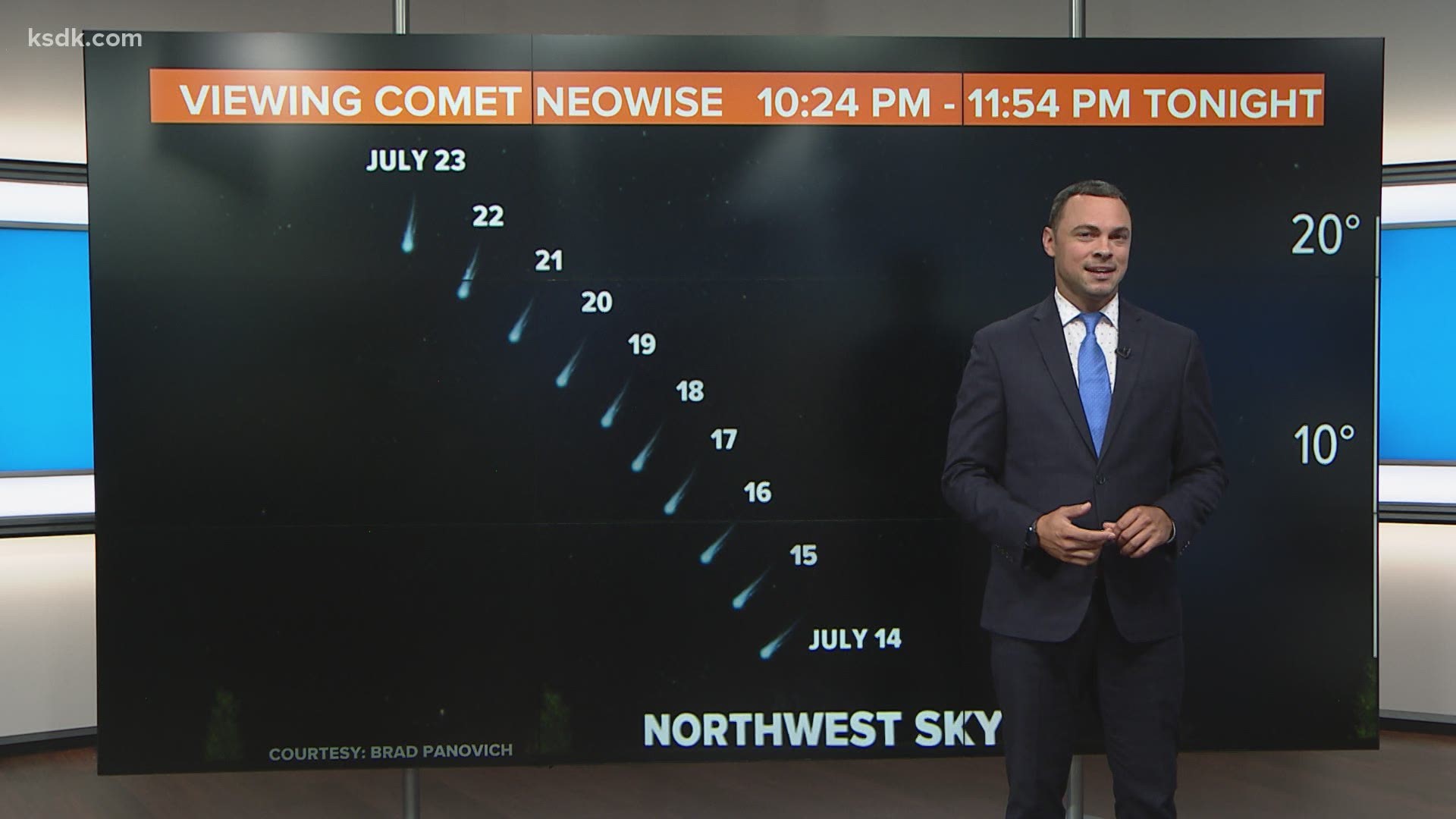ST. LOUIS — A 3-mile wide comet is passing through our solar system and you can even see it here in the St. Louis area with the naked eye, at least for one more week.
Then, it will disappear and it won't return for another 6,800 years.
Over the next week, Comet NEOWISE will become visible, but only in the night sky rather than in the predawn hours, like we've seen this week. As the days go by, the comet will move farther from the Earth and the Sun, making it less and less visible through next Thursday.
While the comet will be higher in the sky each night, the brightness will dim between now and July 23.
To see the comet, look in the northwestern part of the sky from 10 p.m.-midnight Thursday and Friday this week and also from 3:20- 3:45 a.m. this week. Starting next week, the comet will only be visible at night roughly one hour after sunset.
NEOWISE is an acronym that stands for Near Earth Object Wide-field Infrared Survey Explorer. In astronomy, a comet is usually named after the person or telescope that discovers it and in this instance, the discoverer was NASA's telescope NEOWISE. The discovery was made back in March.
Comet NEOWISE is made up of soot left over from the formation of our solar system that dates back 4.6 billion years ago. As comets orbit closer to the Sun, they heat up and emit gasses and dust — this is the material that you see that makes up the tail of the comet.
Comets are known as snowballs of gas and dust making sweeping orbits around the Sun. Comets are not meteors nor are they asteroids, but they are often mistaken for them.
Comets follow an elliptical orbit and were formed in the early days of our solar system, even before planets were formed. Asteroids are rocky fragments from the beginning of the solar system but often have no orbit. Meteors are bits of debris that fall into Earth's atmosphere and break up fairly quickly and sometimes fall to Earth's surface.
The NEOWISE comet is only visible in the Northern Hemisphere right now, and there is no risk of this comet impacting Earth. It's nearly three-fourths of an astronomical unit away from Earth. To give some perspective, the distance from Earth to the Sun is 1 astronomical unit. The comet also is not moving toward Earth but rather away.
So, quickly look up just after sunset over the next week.
The last time a comet was visible with the naked eye was in 1995-1996 when comet Hale-Bopp passed by.

